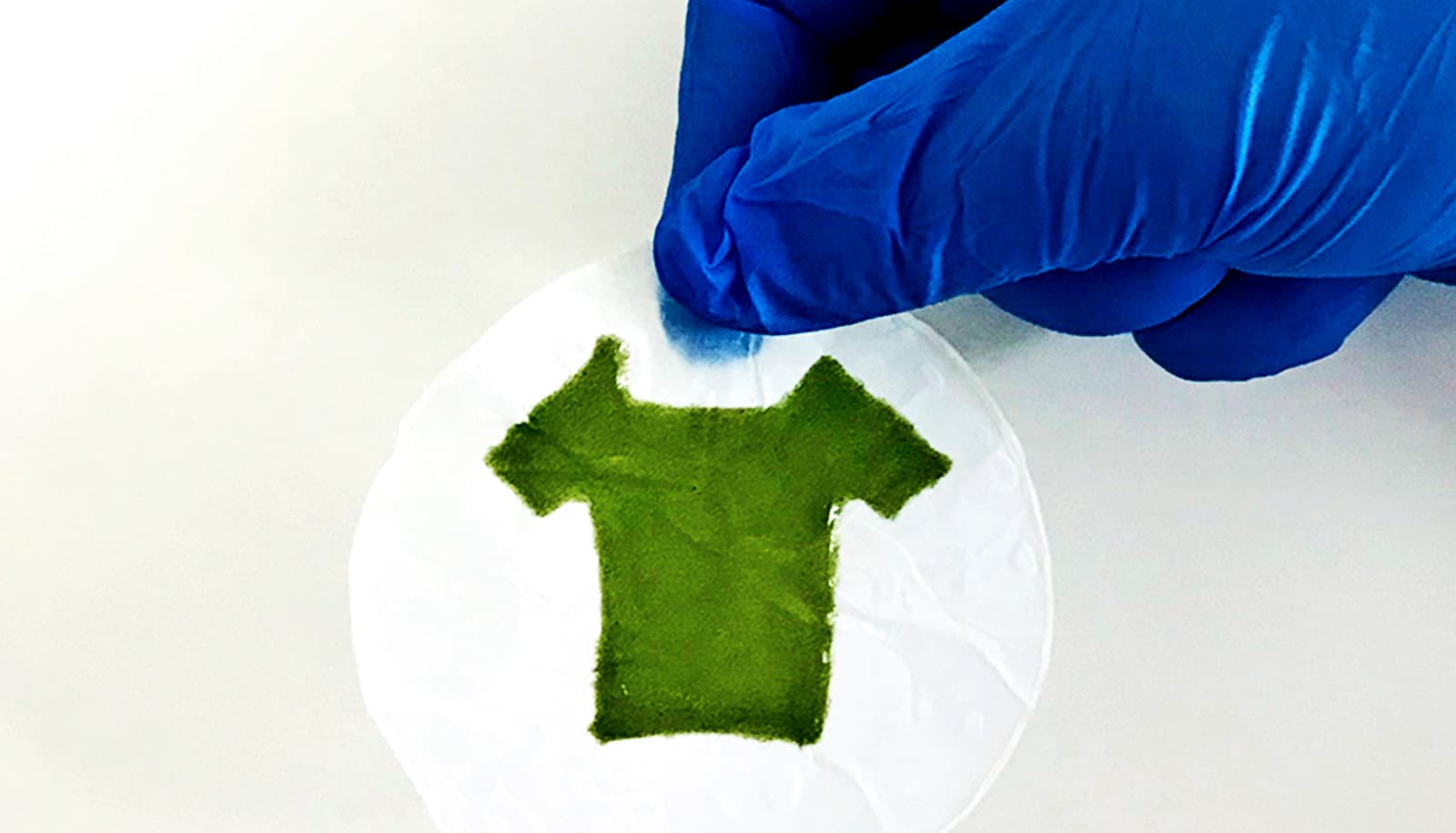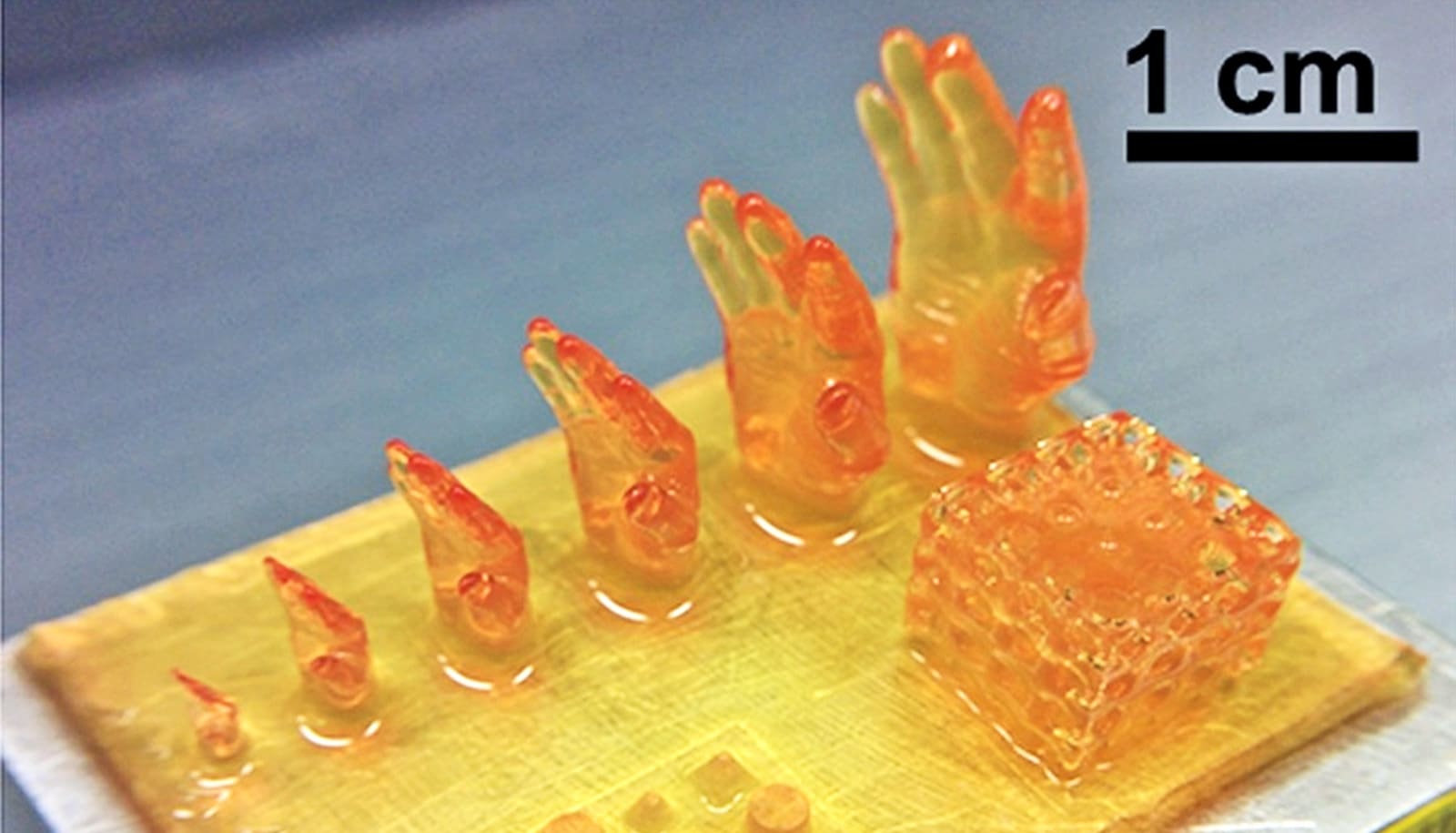For the first time, researchers have used 3D printers and a new bioprinting technique to print algae into tough, resilient living, photosynthetic materials.
As the researchers report in the journal Advanced Functional Materials, the material has a variety of applications in the energy, medical, and fashion sectors.
Living materials, which are made by housing biological cells within a nonliving matrix, have gained popularity in recent years as scientists recognize that the most robust materials are often those that mimic nature.
“Three-dimensional printing has shown to be an effective technology for fabricating living materials that have many environmental and other benefits,” says Anne S. Meyer, an associate professor of biology at the University of Rochester.
“Our photosynthetic living materials are a huge step forward for the field since they are the first example of an engineered photosynthetic material that is physically robust enough to be deployed for real-world applications,” Meyer says.
The work to develop a biologically based material is the latest in a series of research efforts led by Meyer’s lab. Meyer and her research team have used bacteria to develop such industrially important materials as artificial nacre and graphene.
Material ‘feeds’ itself for weeks
To create the photosynthetic materials, the researchers began with a nonliving bacterial cellulose—an organic compound that bacteria produce and excrete. Bacterial cellulose has many important mechanical properties, including flexibility, toughness, strength, and ability to retain its shape, even when twisted, crushed, or otherwise physically distorted.
The bacterial cellulose is like the paper in a printer, while living microalgae acts as the ink. Meyer and her colleagues used a 3D printer to deposit living algae onto the bacterial cellulose.
The combination of living (microalgae) and nonliving (bacterial cellulose) components resulted in a unique material that has the photosynthetic quality of the algae and the robustness of the bacterial cellulose. The material is tough and resilient while also eco-friendly, biodegradable, and simple and scalable to produce.
The plant-like nature of the material means it can use photosynthesis to “feed” itself over periods of many weeks, and it’s also able to be regenerated—a small sample of the material can be grown onsite to make more materials.
Fashion forward algae
The characteristics of the material make it an ideal candidate for a variety of applications, including new products such as artificial leaves, photosynthetic skins, or photosynthetic bio-garments.
Artificial leaves are materials that mimic actual leaves in that they use sunlight to convert water and carbon dioxide—a major driver of climate change—into oxygen and energy, much like leaves during photosynthesis. The leaves store energy in chemical form as sugars, which can then be converted into fuels.
Artificial leaves therefore offer a way to produce sustainable energy in places where plants don’t grow well, including, potentially, outer space colonies. The artificial leaves the researchers produced are also made from eco-friendly materials, in contrast to most artificial leaf technologies currently in production, which are produced using toxic chemical methods.
“For artificial leaves, our materials are like taking the ‘best parts’ of plants—the leaves—which can create sustainable energy, without needing to use resources to produce parts of plants—the stems and the roots—that need resources but don’t produce energy,” Meyer says. “We are making a material that is only focused on the sustainable production of energy.”
Another application of the material would be photosynthetic skins, which could be used for skin grafts, Meyer says. “The oxygen generated would help to kick-start healing of the damaged area, or it might be able to carry out light-activated wound healing.”
Besides offering sustainable energy and medical treatments, the materials could also change fashion. Bio-garments made from algae would address some of the negative environmental effects of the current textile industry in that they would be high-quality fabrics that would be sustainability produced and completely biodegradable. They would also work to purify the air by removing carbon dioxide through photosynthesis and would not need to be washed as often as conventional garments, reducing water usage.
“Our living materials are exciting because they can sustain themselves over periods of weeks and can be multiplied onsite, so that they have the potential to be truly long-lasting and able to be shared all over the globe as easily as sourdough starter,” Meyer says.
Additional coauthors are from Delft University of Technology in the Netherlands.
Source: University of Rochester



